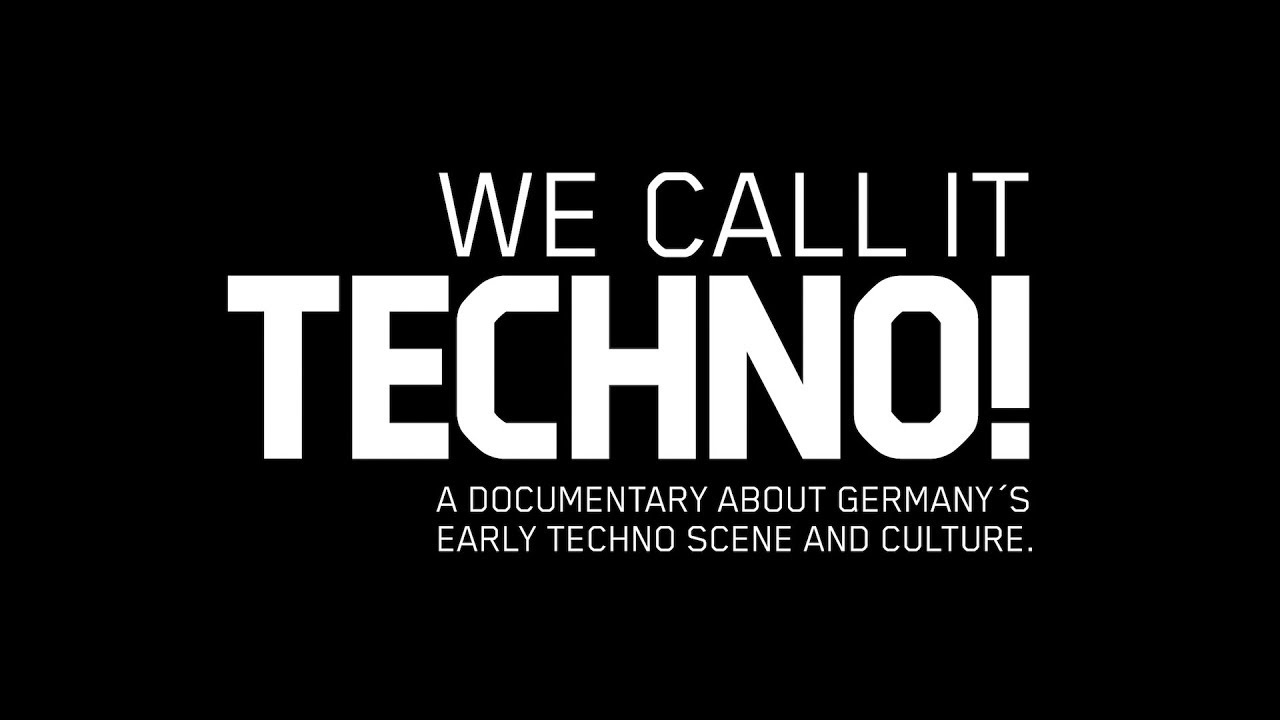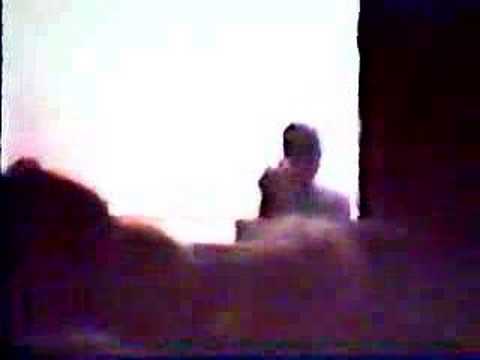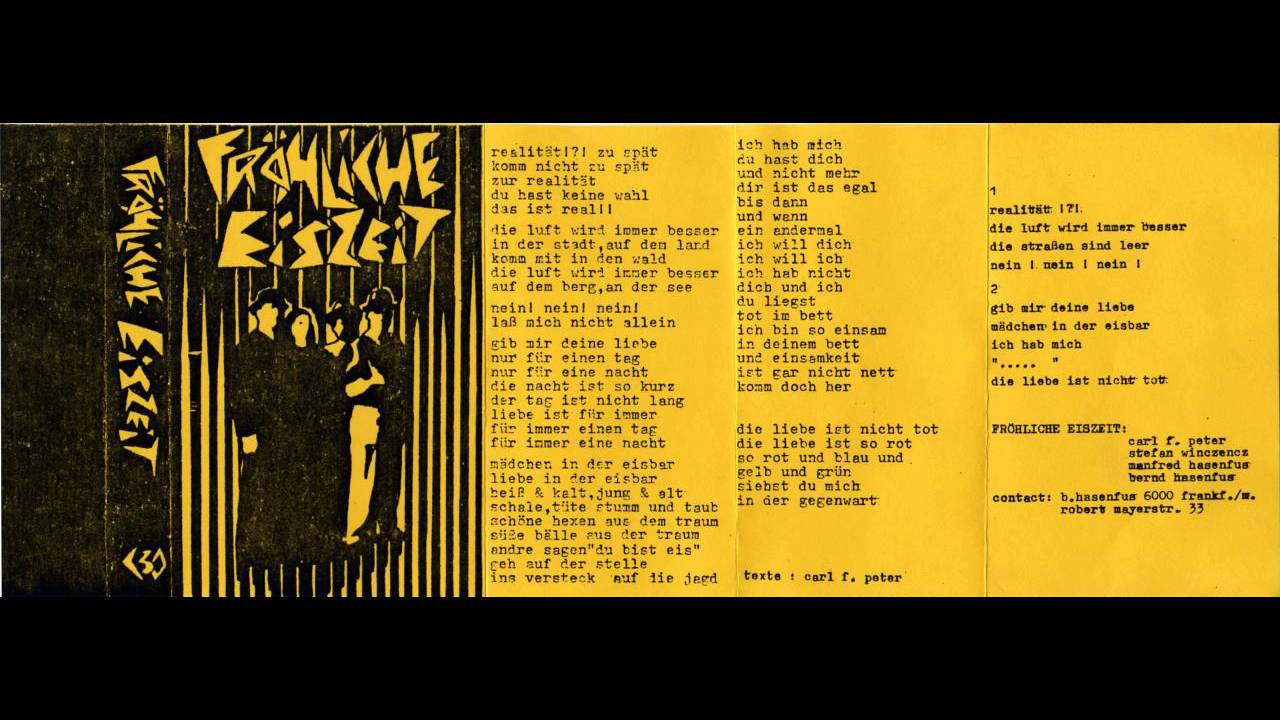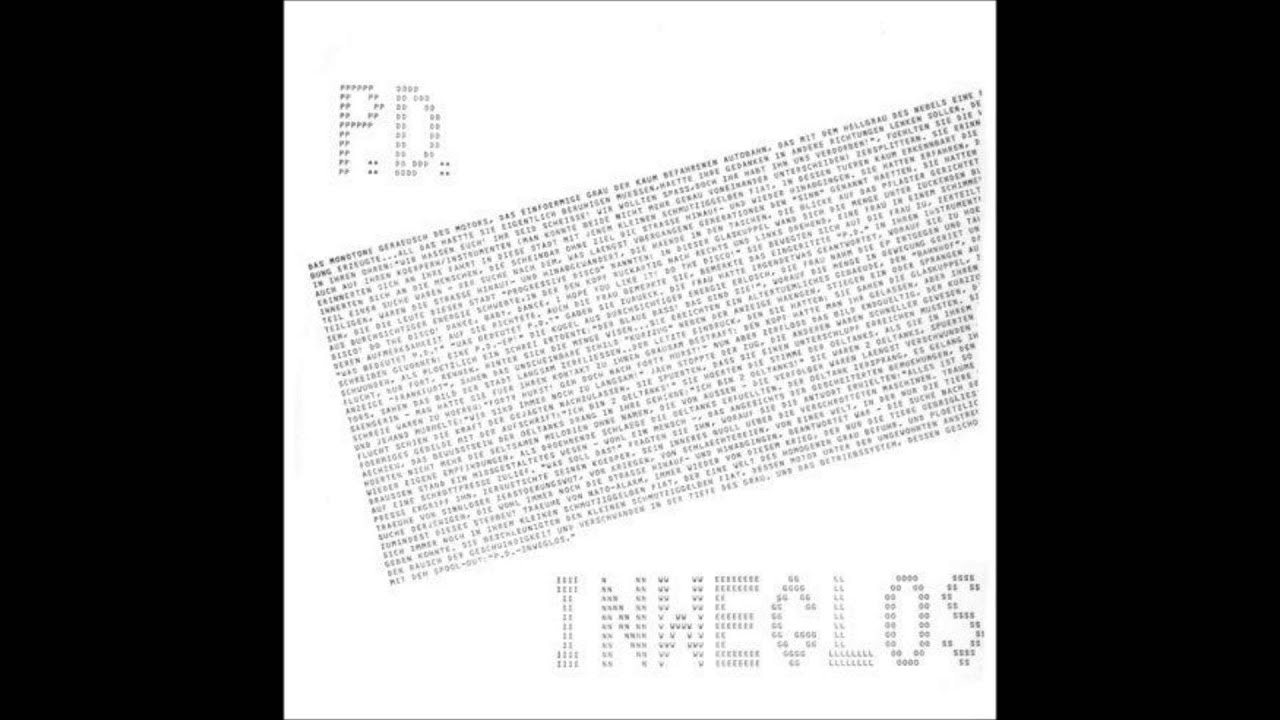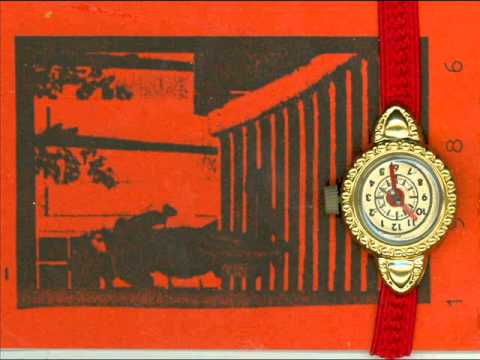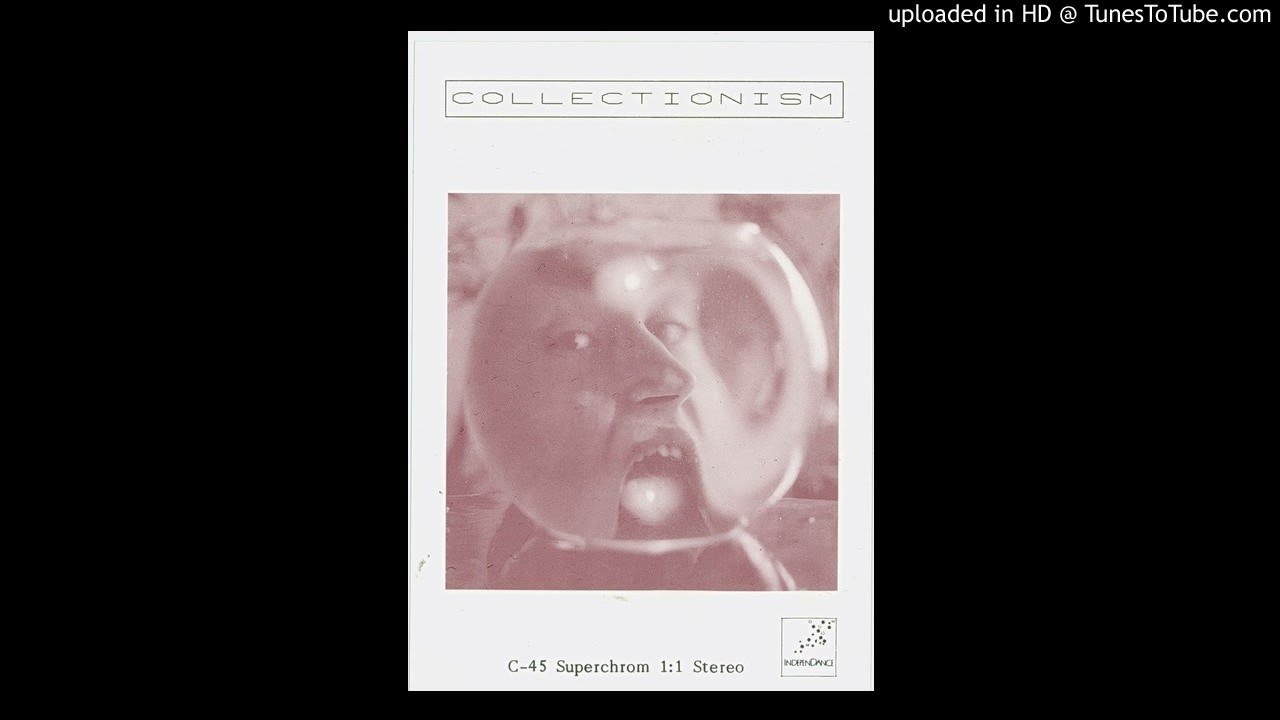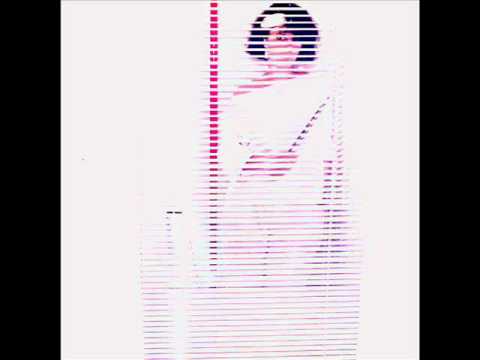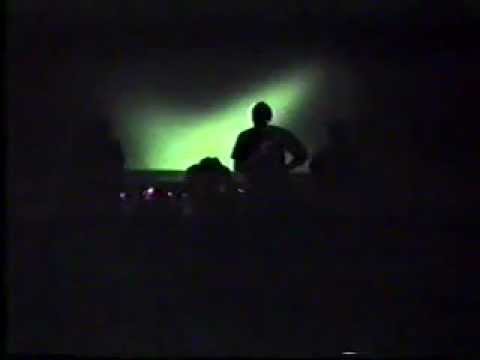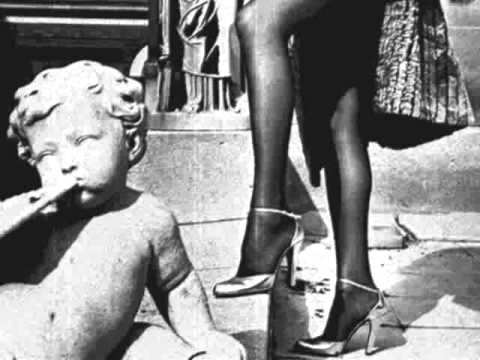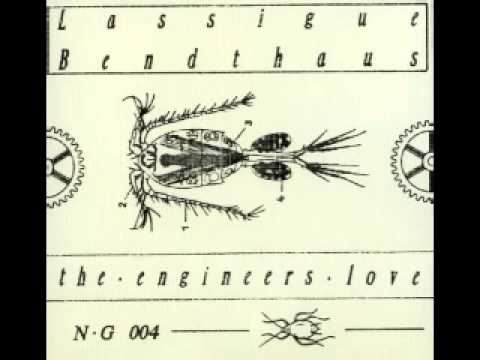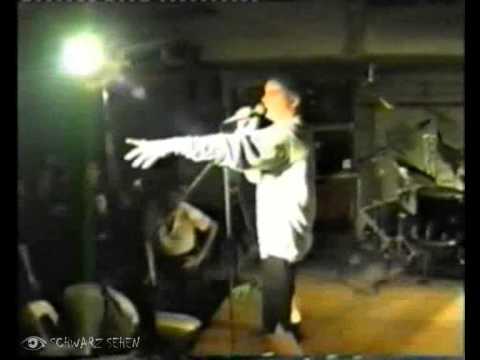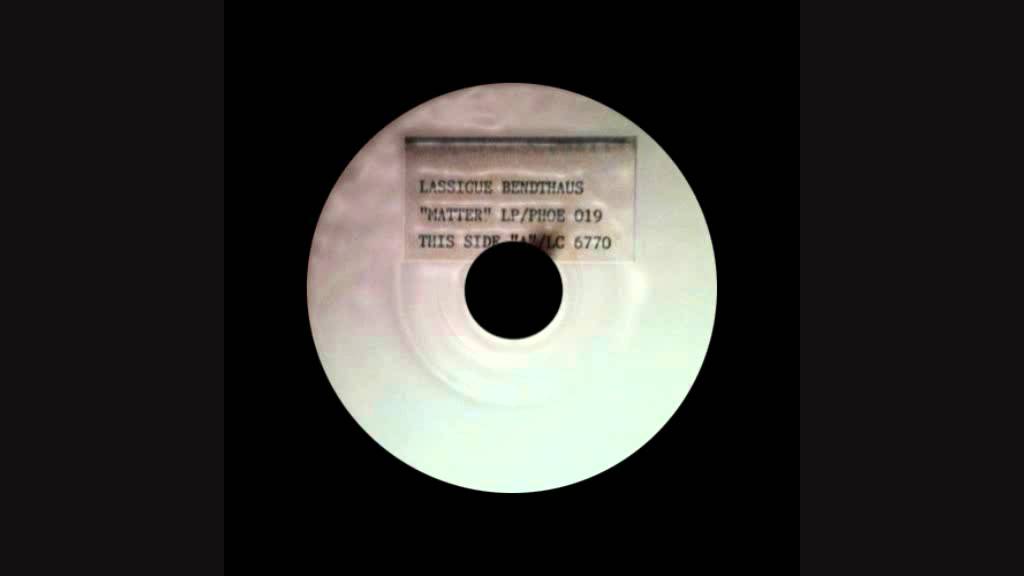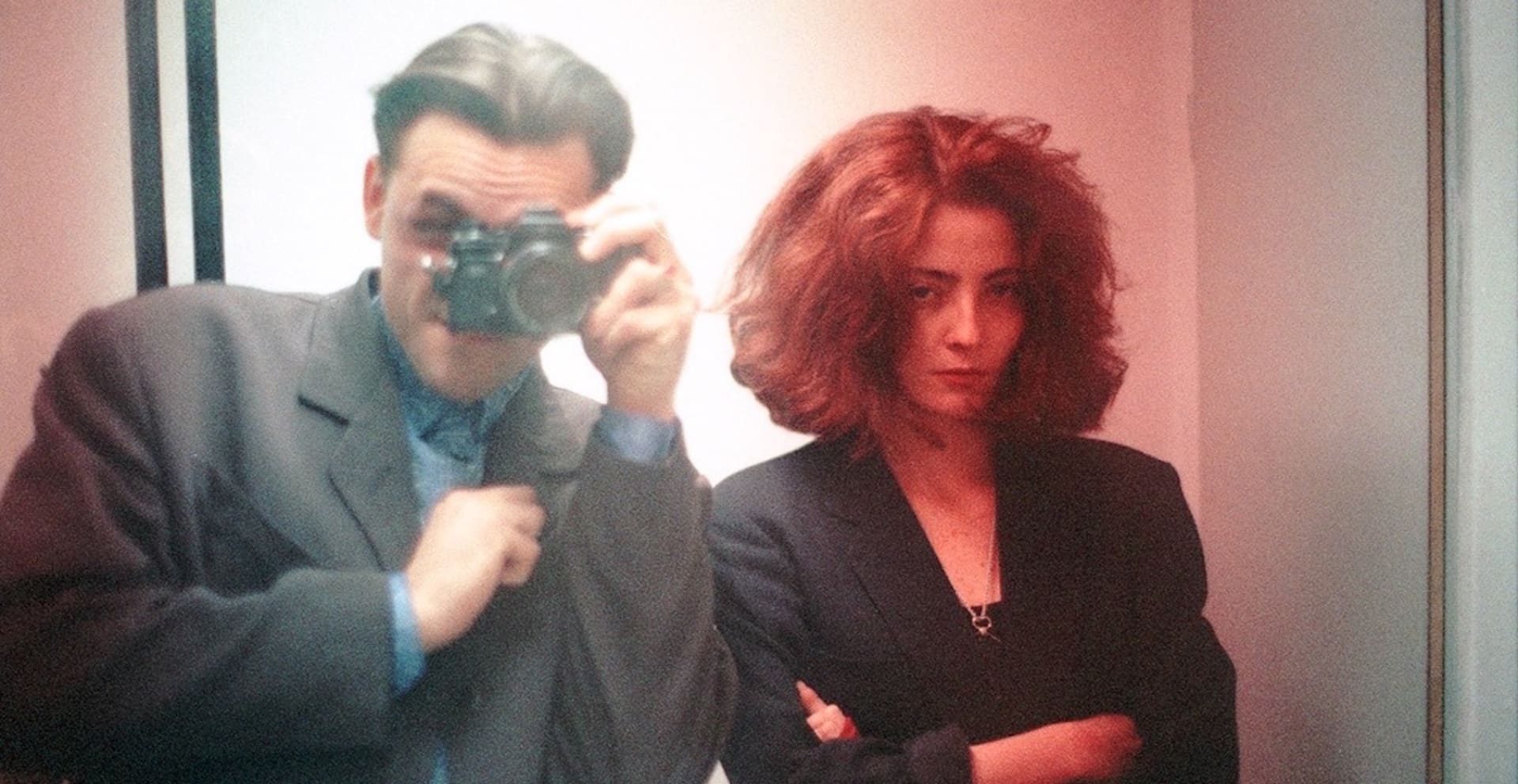
How Frankfurt’s ’80s Tape Scene Laid The Foundation For The City’s Techno Renaissance
A history of the pre-techno scene that birthed such figures as Tobias., Atom TM and Dandy Jack.
If you’ve seen our video feature WE CALL IT TECHNO!, you know that Frankfurt has long been a central node in Germany’s techno culture. What you may not know, however, is that the city has a rich history of electronic music stretching back to the late ’70s. From then, and through the ’80s, the city was a backdrop for an experimental electronic music scene that primarily released on cassette tapes. Frequent TEB contributor Oli Warwick met some of the key artists from this period to share the story of this unique moment in time.
The fallout from punk and rise of industrial music in the early 1980s spawned many interesting pockets of music culture. In Frankfurt, a small but dedicated network of curious minds started to dabble with synthesizers and drum machines without any thought to where their experiments might lead. Before genre dogmas were established, and with very few precursors to take their lead from, these artists created their own scene through DIY cassette releases and makeshift live performances. As the ‘80s wore on and the naïve sounds became more accomplished, more defined musical forms such as EBM and techno emerged, and this innocent, youthful movement splintered in many directions.
Some of those involved became part of the electronic music establishment in Germany, such as Tobias Freund, Uwe Schmidt (a.k.a. Atom TM) and Martin Schopf (a.k.a. Dandy Jack). Others missed the open-ended abstraction of the early years and drifted on to other ventures. But for a short period of time a spirit of unbridled creativity yielded some truly inventive electronic music, much of which is buried on limited run cassettes that never saw wide release. This is the untold story of Frankfurt’s DIY tape scene.
After punk broke down the barriers to entry for people wanting to make music— around 1976-77—the emergence of commercial synthesizers and rudimentary recording equipment in the years that followed helped foster a more universal culture of creativity. “If you look back at that specific period of electronic music,” says Uwe Schmidt, “there are so many unique releases because there was not really a template for a lot of things.”
You could already hear synths creeping into popular music on the radio, but the more transgressive exploits of pioneering British industrial acts were also reaching foreign shores. Throbbing Gristle’s Frankfurt gig in November 1980 became notorious thanks to a crowd member who poured a bottle of wine over Chris Carter’s equipment mid-set, cutting the gig short in dramatic fashion (as seen in the video clip below). Incidentally, Tobias Freund still has the wine-stained towel Carter used to clean up the mess.
The gig took place at Frankfurt’s Städelschule, one of a few notable art schools in the city and surrounding area. The student communities associated with these schools helped alternative culture thrive. In the post-war division of Germany, Frankfurt had been nominated as the country’s financial center, but in the late ‘70s and through the ‘80s, the city was still affordable and undeveloped in some areas.
“Frankfurt was a really special place,” Uwe Schmidt says of the time. “It got gentrified throughout the ‘90s, but I remember when I moved from the outskirts to the center, there were parts of downtown Frankfurt which were still kind of shabby. When I first met Tobias, Lars and Dandy Jack, some of them were living pretty much in the centre of Frankfurt in an occupied house.”
By 1980 there was already a scene of inquisitive bands representing the Frankfurt underground. Walter Truck of Sportsgroup ran Walters Lust Label, while hardcore punk outfit Cocks In Stained Satin had a side project called Fröhliche Eiszeit which fused rudimentary synth programming with a ragged post-punk dynamic.
Ralf Wehowsky’s Mainz-based P16.D4 project and Selektion label evolved in the direction of extreme noise (featuring future Mille Plateaux founder Achim Szepanski). However, PD, the earliest incarnation of the group, had a few compelling tracks that stumbled out of the post-punk murk under the guise of a style they briefly called “progressive disco.”
Radio and magazines were rich sources of information at that time. John Peel’s cutting-edge BBC radio shows could be picked up via the British Armed Forces Broadcasting Service. The most frequently name checked source of information on underground music was Sounds, a German publication which wound up documenting punk, industrial and German new wave (Neue Deutsche Welle) until it closed in 1983.
Aside from obvious reference points like Throbbing Gristle and Cabaret Voltaire, French industrial pioneers Die Form, Dusseldorf’s seminal Der Plan, British post punk agitators This Heat and industrial behemoths Test Dept were also key influences on the emergent DIY electronic music culture.
Most of the protagonists in the early Frankfurt electronic music scene were making their first moves as school kids. Among the earliest to be immersing themselves in synthesis and committing themselves to tape were Vo Ese, a duo made up of school friends Tobias Freund (aka Pink Elln) and Lars Müller (aka Victor Sol).
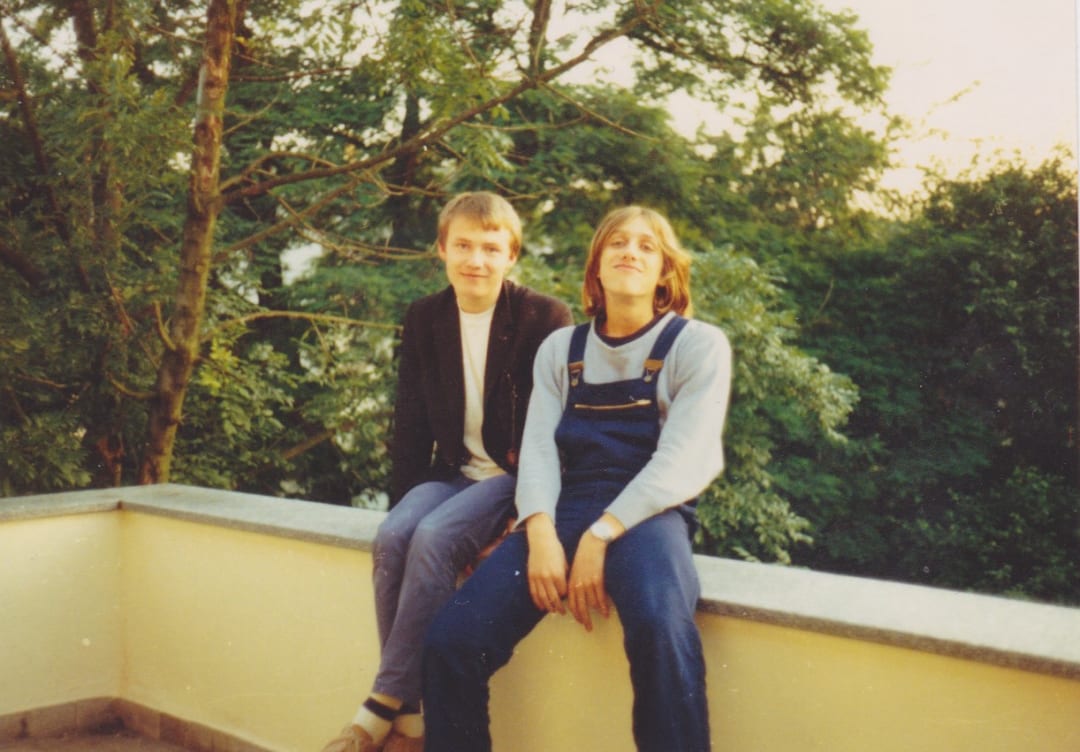
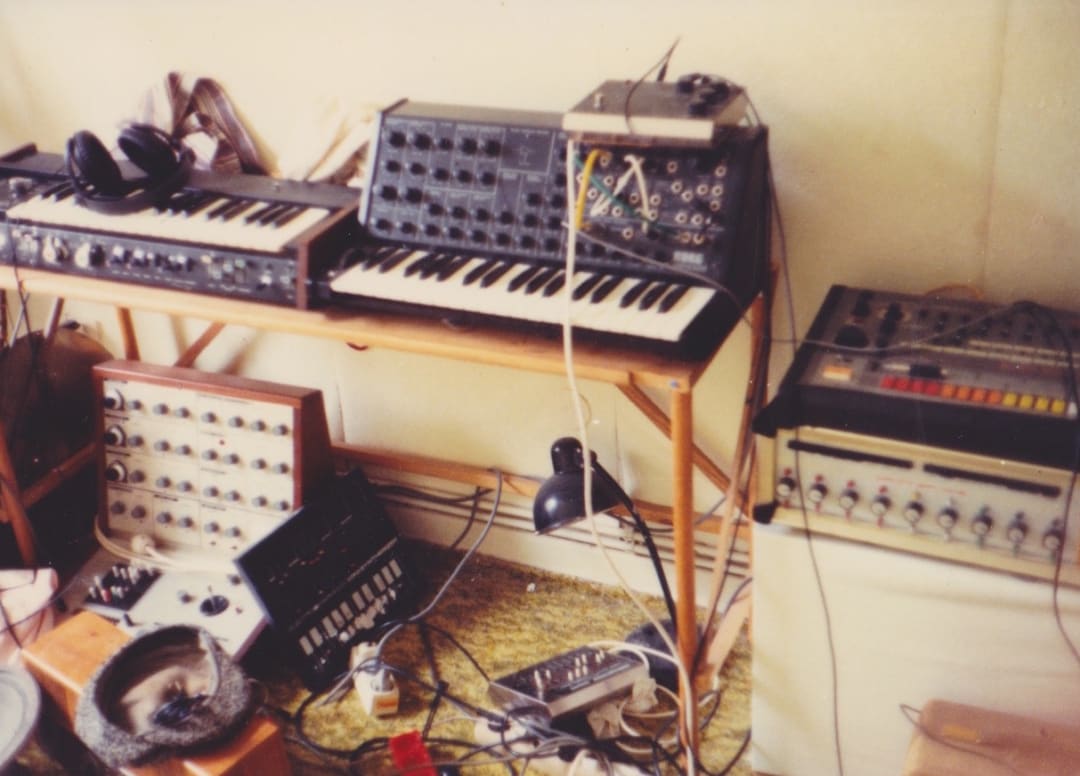
“We started from scratch with tape recorders we found on the street,” says Freund. “We didn’t have real instruments at first. After I finished school I was still living with my parents and earning money working in the civil service, so I was able to buy a Korg MS-20 in 1980. Then Lars and I bought more stuff, like drum machines and echo machines.”
Vo Ese never released any music officially, but they recorded many tapes. Two tracks surfaced on limited-run compilations, but otherwise their music remains a private mystery known only to a select few who hold their work in high regard.
“When Tobias and Lars played their music to me I thought, ‘this is so advanced and full of ideas and inspiration,’” says Peter Weiss (aka James Dean Brown, or back then, Romulus Cœurque). “They showed me cassettes full of recordings, but they were not interested in releasing stuff.”
“It was a sad parting for me when Tobias decided he didn’t want to continue with Vo Ese,” says Müller, “but what we had been doing was so dear to our hearts, we thought, ‘why are we going to release something after the fact?’”
Peter Weiss came into the picture around 1983, when Freund and Müller were just finishing school and Vo Ese had nearly run its course. Müller had his own solo project called Sex Bizarre, but he was looking for a new collaboration. Weiss had been making lo-fi experiments with his friend Peter Steinfadt (a.k.a. Pietro Insipido).
“Punk was this idea of, ‘we form a band but we don’t play,’” says Weiss. “It seemed to be so easy. Pietro bought a TB-303 because it was the cheapest sequencer on the market. We added some noise and some pots from the kitchen, the typewriter, and recorded some stuff, which is unlistenable of course.”
Freund and Müller were driving to Cologne to see Cabaret Voltaire, and Weiss managed to tag along through the help of a mutual friend, the owner of local record shop Klistier Records. On the journey, Weiss and Müller connected over shared ideas about applying the rhythm ethic of traditional tribal music to electronic equipment, and their project Hypnobeat took shape from this concept.
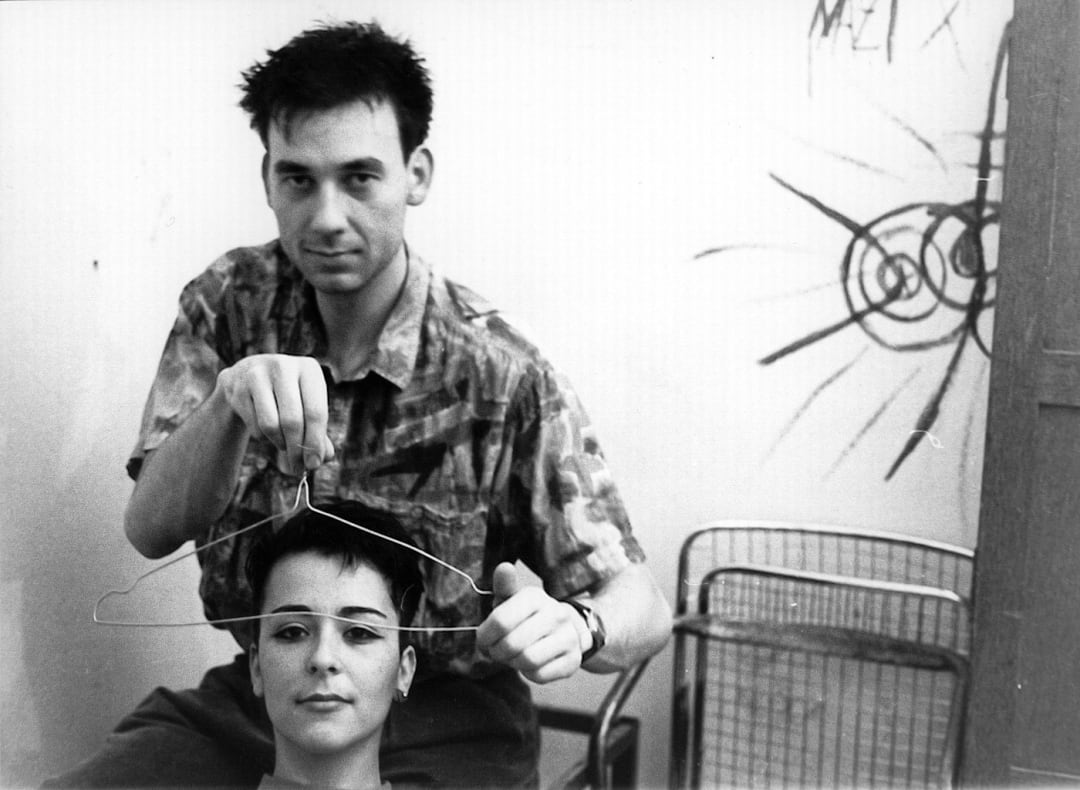
“Die Puppe by Die Form from France was a revelation to me because it was one of the first experimental albums that used the TR-808,” says Weiss. “The most magic moment of meeting Lars and Tobias was when I entered their place in Frankfurt and Tobias had an 808.”
The iconic piece of kit became the central focus of Hypnobeat. In the years to come, up to three would be used on stage at one time along with a tangle of other drum machines and FX units.
Roman Rütten was similarly enamored with the possibilities of electronic music. He had been raised as a classically trained pianist, but from the age of 14 he was swept up by the punk explosion.
“I got all the records from the Sex Pistols until Sham 69, so I felt this classical music way is not my style, I have to do something of my own,” Rütten explains. “I started out drumming on iron bars with bits of wood. I got four tape recorders, and then the first MS synth from Korg.”
Rütten’s project, Schaum Der Tage, began in 1982. He used a multi-track tape recorder to capture sounds and melodic passages from his synth and underpinned it with rudimentary drumming on a waste paper basket. The first Schaum Der Tage tape release didn’t come out until 1986, but Rütten’s musical training elevated his lo-fi ideas into distinctive song pieces.
Rütten also worked with his old school friend Martin Schopf as Subrosa. At times Schopf and Rütten strained, albeit naively, to write heartfelt songs like “Hundred Of Miles Away”, but they sounded most memorable spitting out the rowdy electro punk of “Zeitlos.”
“Martin is one of my oldest school friends,” says Rütten. “It was much later we decided to make music together. I wouldn’t say we made good music together, but our aim was just having fun, making jokes the whole time.”
The affordability and accessibility of cassettes were intrinsic to DIY music culture in the 1980s. There were a few key tape labels in Frankfurt that helped push this scene locally and internationally, through a combination of music reviews, classified adverts in magazines and addresses on cassette inlays. This underground network moved slowly—it might take three months to get a reply to a package of tapes—but it was vibrant.
Peter Weiss’ Monochrome Tapes was primarily a vessel for Hypnobeat recordings, but the Independent World compilations he and Steinfadt put together were indicative of the reach of tape culture. As well as local acts like Vo Ese, Hypnobeat and Stefan Freund, they were able to score tracks by Die Form, Pink Industry, Tom Ellard (of Severed Heads), Steven Brown (of Tuxedomoon), From Scratch and more.
“The compilations that Peter made were fantastic,” explains Müller. “He got to know Severed Heads and people like that. So he would get tracks by people you wouldn’t expect to contribute to a compilation that’d sell probably 100 copies.’”
There was also a series of compilations on the MAM-Aufnahme, Ffm label that supported the local scene alongside international acts, while No Problem Tapes released two comprehensive compilations featuring scores of forgotten, one-off projects. Collectionism also stands out as a particularly accomplished Frankfurt group from the era, while Niko Heyduck’s collaboration with noted author Thor Kunkel as Die Synthetische Wohlfahrt yielded an excellent self-released demo in 1984.
The aforementioned Klistier Records shop was a central hub that sold the established industrial and experimental releases of the day. It’s fashion complement could be found in Jinx, a store set up in the Nordend neighborhood by Christa Kilbinger and Andreas Comtesse. It served as a physical meeting point for the tape scene.
“The fashion style in Jinx was influenced by musicians like Tuxedomoon, Heaven 17 and the clothes of females musicians,” explains Kilbinger. “Big shoulder pads, oversized blazers. To reduce the expense, we stocked our own self-made clothes too. At the end of 1985, we began selling tapes. We contacted local bands and promoted the shop in local magazines, where we asked the cassette people to get in contact with us.”
In 1986 Jinx organized the Frankfurter Cassetten Festival at Batschkapp, which featured live performances by Hypnobeat, Cocks In Stained Satin and Collectionism. Prior to that, the venue had hosted the emergent punk movement and went on to bring high-profile industrial and new wave acts like Tuxedomoon, Medium Medium and Chris & Cosey to town.
“I played my first gig in Batschkapp opening for Meat Beat Manifesto,” says Uwe Schmidt. “The Batschkapp would bring bigger international acts, people like Skinny Puppy and then a local artist would open. I had no idea what to do when I played there.”
A significant festival in Frankfurt’s early electronic history was Geminox. It was organized in 1984 by the late Walter E. Baumann, a local impresario from the city’s fertile art scene who ran the celebrated art and music publication Schvantz! Geminox featured experimental audiovisual performances by Z’EV, Club Moral, and Mainz-based group Non Toxique Lost. It was also where Hypnobeat played its first gig.
“Peter and I were preparing the music for Geminox,” explains Müller, “and we were not sure we could play to such a large audience, just the two of us. So we asked Tobias and Pietro [Insipido] if they would come on stage with us and participate. Peter and I did the drum programming, and they were handling the machines and using effects units.”
When they were still students, many of the artists in this scene organized their first live experiences through gigs at their schools, albeit with an audience that was arguably tougher than the more switched-on crowds in established venues.
“Tobias and I played our first gig at school in ‘79 or maybe ‘80,” says Müller. “We got some amps, brought our own equipment, and we really didn’t know how people would react. People occasionally were quite aggressive, trying to pull out cables. For normal people, playing with drum machines apparently was a huge provocation.”
“I was organizing gigs with friends in school,” says Rütten, “something like a high school party. It was horrible. Uwe Schmidt was helping me to make the mix, but a friend of mine made inflatable puppets, which he blew up with fans that were louder than my music.”
A few years younger than the likes of Weiss, Freund and Müller, Uwe Schmidt didn’t start making music until the mid 1980s. He first came to the attention of the scene’s protagonists at a makeshift school gig where he played alongside his school friends Olaf Finkbeiner and Torsten Kühne as Pornotanz.
“Martin said to me, ‘an old friend of mine is playing a gig in a school, do you want to come along?’” recalls Müller. “I thought the band, Pornotanz, was terrible, but the part Uwe did was amazing, like a modified version of Cabaret Voltaire or Front Line Assembly. I said to Martin, ‘lets go and talk to him,’ and from then on we struck up a friendship.”
It took some time before Schmidt presented his own recordings as Lassigue Bendthaus, captured on the lo-fi but deftly produced 1988 record The Engineers Love. It was released on NG Medien, a tape label set up by Rütten, Finkbeiner and Schmidt. The sonic progression between Pornotanz and Lassigue Bendthaus is subtle but noticeable, and it reflects the bigger changes that impacted the electronic music scene both in Frankfurt and beyond.
“I was fascinated by the electronic body music developments,” says Rütten. “I had contacts from the tape scene, to Bill Leeb from Skinny Puppy. We agreed to release the first album by his new band Front Line Assembly in Germany on NG Medien.”
Whereas the industrial scene of the early 1980s had been undefined and open, by the mid-to-late ’80s distinct new approaches had taken shape. Key amongst these was EBM. Sequencers, samplers and digital technology gave rise to punchier dance floor sounds. Sven Väth championed EBM alongside other electronic dance music at his clubs Vogue and Omen. Fabled, disco-era Frankfurt club Dorian Gray even made concessions to this music, primarily through the work of local promoter Andreas Tomalla (aka Talla 2XLC) and his Technoclub parties.
Talla was also associated with Bigod 20, an EBM group formed in Frankfurt in 1988 spearheaded by Markus Nikolai. Bigod 20 found greater success in the early ‘90s when they added vocalist Thomas Franzmann (a.k.a. Zip Campisi) to their line-up. Nikolai and Franzmann would go on to form the celebrated minimal house label Perlon later in the ‘90s.
Schmidt’s own journey as Lassigue Bendthaus progressed rapidly. Racking up hours of studio time at the semi-professional Besser Tonstudio; after two years of painstaking work he emerged with Matter, his bold, hard-hitting second album that leaned heavily into the sound of EBM. Schmidt went on to record under scores of aliases, some of the most prominent being AtomTM and Señor Coconut.
Alongside EBM, the arrival of US dance music from Chicago and Detroit also caused a seismic shift in the electronic music landscape. Artists were now faced with the chance to take things in a more professional, or even commercial, direction.
“When Tobias and I started doing our stuff, Yellow Magic Orchestra released Technodelic,” explains Müller. “We started calling our music ‘techno’. We used ‘techno’ for a long time, maybe until ‘87 or ‘88, and then once the house and acid scene started the tag techno suddenly had a different meaning, and I didn’t like to use it any more.”
By 1987, the core friendship circle of artists and friends in the Frankfurt tape scene contained a revolving mixture of collaborations and experiments. Alejandra Carmona Cannobbio and Claudia Iglesias had come into the creative fold. Müller and Cannobbio had a project called Arquitectos De Ruidos, and a loosely defined group project emerged called Zone Industriel. They took a road trip to play a gig in Barcelona, captured in wistful Super 8 by Freund and available to watch on his Vimeo page.
It was around this time that the band Sieg Über Die Sonne also took shape. The first record under the name, the Mr. Leben 7” in 1989, featured Freund, Schopf, Müller, Cannobbio, Iglesias and Heyduck. However, following the trip to Barcelona, a clear split emerged in the group that left some of the core members by the wayside. Roman Rütten, more enamored with the song-based structures of the post-punk and gothic movements, was told he no longer matched the group’s aesthetic.
“At that time, around 1988, Martin told me I didn’t fit into the group any more,” says Rütten. “Him and Tobias and all the other guys said, ‘we have to go our electronic way, and Roman must go his post-punk way.’”
Rütten went on to many other projects throughout the ‘90s and ‘00s, including Crux Ansata, Zerose and Endraum. Meanwhile, Müller, Schopf, Cannobbio and Iglesias headed to Chile in 1989 and played their part in encouraging the development of an electronic music scene in Santiago. However, on returning to Germany, Müller was told he was no longer a part of Sieg Über Die Sonne. Freund and Schopf moved to Berlin, continued the project on their own, and found considerable success with their quirky, crossover electro-pop sound.
“It’s sad for me,” says Müller, “because most of the people you’re talking about were a group of friends doing stuff together, until around the late ’80s when the whole scene started to dissolve and friendships were lost. When I came back from Chile, I found out in a very unpleasant way that Tobias and Martin were not interested in continuing with me.”
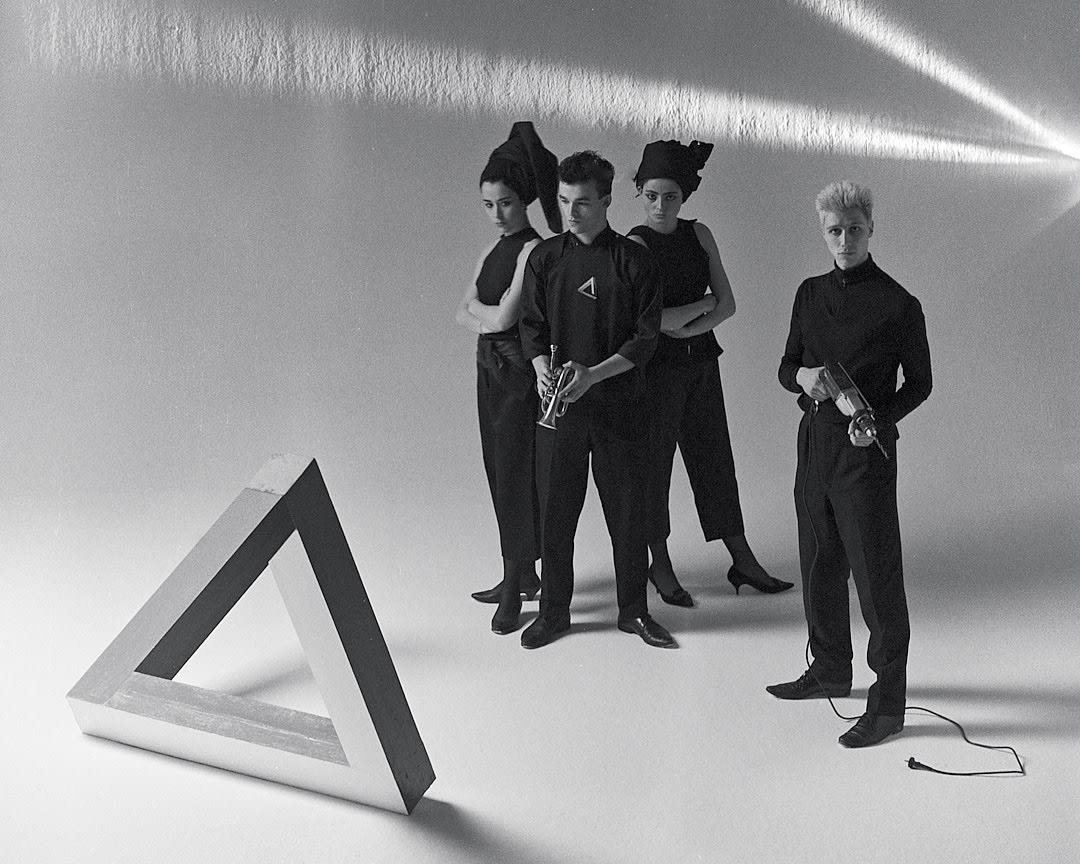
Many projects emerged out of this network of artists through the ‘90s and beyond. Freund developed his solo alias Pink Elln, collaborated with Uwe Schmidt and founded his own label, Non Standard Productions, before progressing to solo work as Tobias. He is now established as one of the leading lights in Germany’s techno scene. Schopf created a new identity as Dandy Jack, recording solo work for Schmidt’s Rather Interesting label and Perlon. Müller worked with Schmidt and Heyduck as +N, and released solo and collaborative work on Pete Namlook’s fabled ambient label Fax. Weiss became James Dean Brown and founded the Narcotic Syntax project on Perlon in a continuation of the work he had carried out as Hypnobeat.
The echoes of the early industrial-inspired work came back around too. Hypnobeat itself was revived around 2012 in the wake of renewed interest in the ’80s tape scene, and for a time Weiss performed live with Helena Hauff using an array of 808s and effects pedals. Meanwhile archival releases of early Hypnobeat work have surfaced on labels such as Dark Entries and Arma. Freund also looked back to his earliest solo productions and released a cassette compilation of previous unreleased Pink Elln material called The Beginning in 2018. The potential for a retrospective of Vo Ese material also hangs in the air. It’s an unresolved chapter from this unique period of experimentation.
The music from Frankfurt’s DIY tape scene was far from perfect. For every shimmering gem of an idea there are another ten half-baked sonic doodles that could perhaps be overlooked. But the climate in which the music was made might never be repeated. Devoid of commercial intent or preconceived stylistic rules, the music captured on tape during this time is as pure as underground, experimental music can get, and it provided a springboard for artists that would go on to achieve great things. Wrapped up in the innocence of youth, when those involved simply, as Rütten puts it, “lived for the day,” it’s a bittersweet tale of the adventures, loves and losses that can arise around a fiercely passionate pursuit of music.
Published October 15, 2019. Words by Oli Warwick, photos by Peter Voigt.

